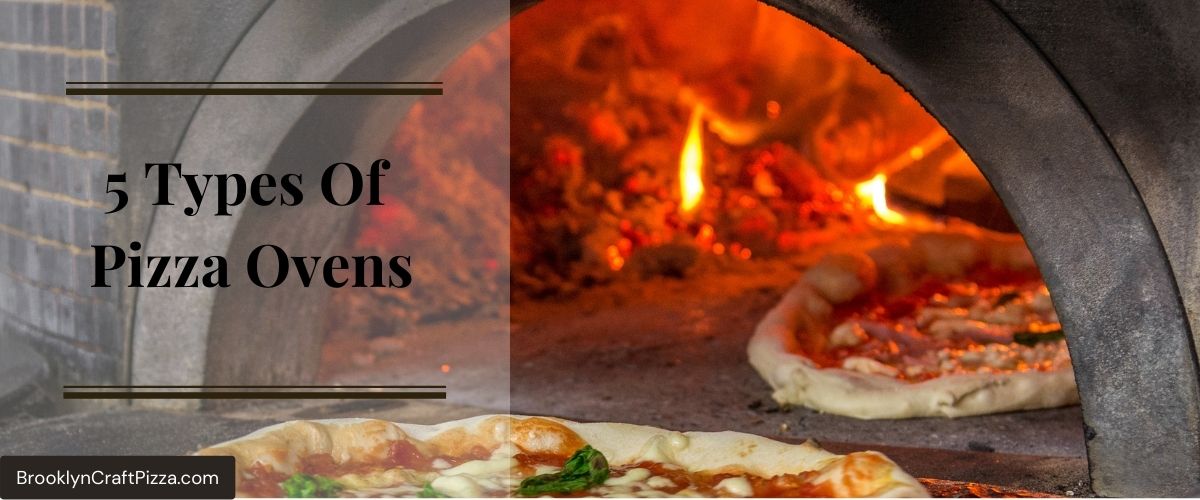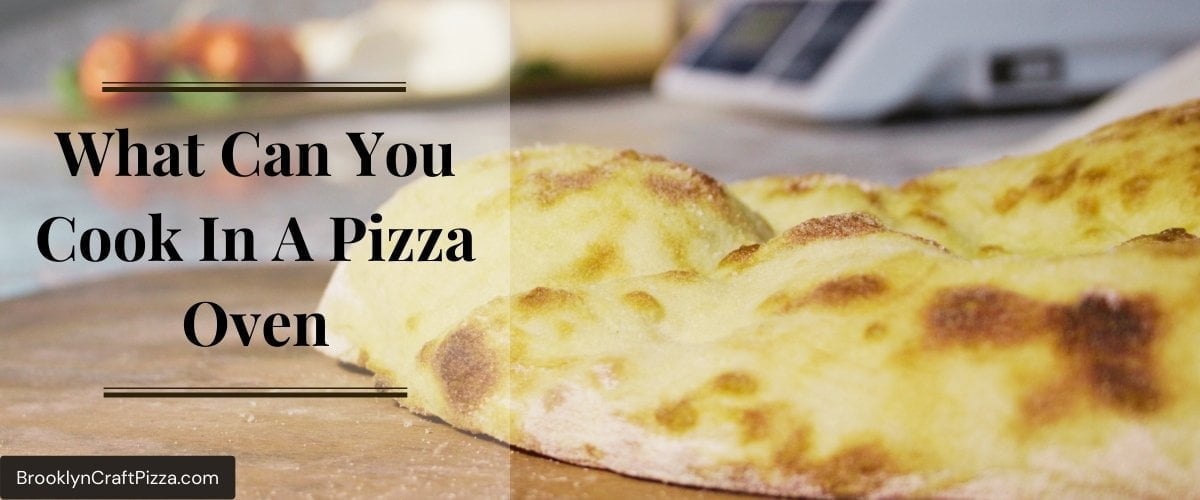Pizza is made up of different layers of ingredients, and there are untold types of pizza in the world. So, while enjoying that slice of pepperoni pizza, you can taste all the ingredients separately, which may make you wonder, Is pizza an element, compound, or a mixture?
In all the hundreds of types of pizza, the ingredients are separate items with different consistencies, colors, shapes, and textures. Furthermore, the pizza-making process involves several actions that may classify pizza as an element, compound, or mixture.
Why is pizza a mixture and not an element or compound? This article answers these questions and further explains whether pizza is heterogeneous or homogeneous. Delve in!
Is Pizza an Element?
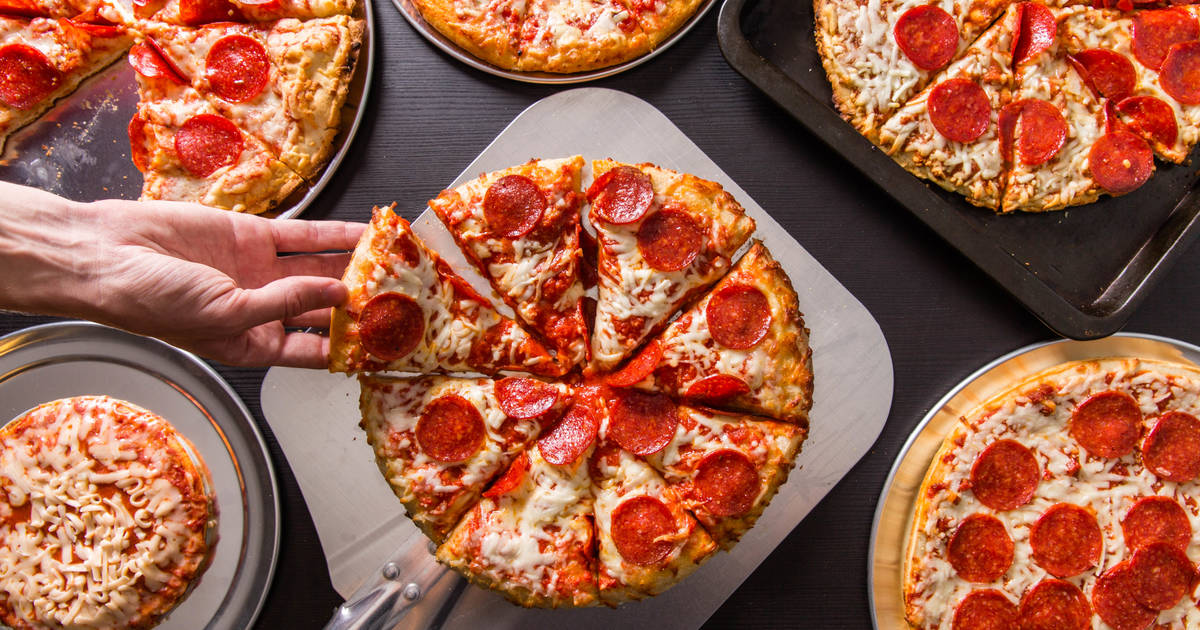
Image Credits: thrillist.com
Element, by definition, is the purest form of a substance. This is because elements cannot be broken down into simpler substances even by chemical reaction. So pizza is not an element because it is not the purest form of any substance; it is made up of several ingredients that can be separated physically.
Is Pizza a Compound?
Scientifically, a compound is a pure substance comprising two or more identical molecules. These molecules consist of different elements’ atoms chemically bonded.
The components making up pizza, cheese, crust, sauce, and toppings are not chemically combined. Therefore, it is clear that pizza is not a compound because it doesn’t consist of identical molecules.
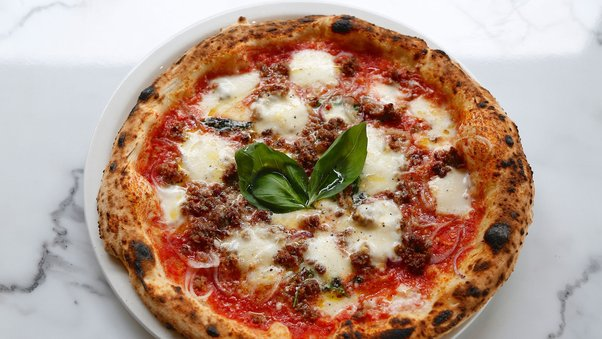
Image Credits: quora.com
However, pizza components such as cheese and crust become compounds after the cooking process, but pizza as a collective of ingredients isn’t a compound.
To argue further, maybe if you cook pizza in the oven and let it burn to cinders, you may think pizza is a compound. This is because heat changes things; when applied to the pizza for too long, it burns it and creates another substance. But even when it’s burnt, pizza isn’t a compound.
Organic substances consist of hydrogen, carbon, and oxygen. When we burn an organic substance, it disintegrates and releases hydrogen, carbon, and oxygen in the forms of carbon monoxide, carbon dioxide, and water.
Carbon residue can be found in the ash, with some microelements, such as nitrogen, sulfur, and iron. These elements in the ash have no chemical associations, and you can physically separate them. Therefore, we refer to the ash as a mixture, not a compound. So, even though various pizza components are compounds, pizza as a whole is not. Plus, none of the individual pizza elements can be referred to as a pizza.
The pizza components retain their physical qualities during and after pizza making. This is the most considerable evidence proving that pizza is not a compound.
Which Pizza Ingredients are Compounds after a Chemical Reaction
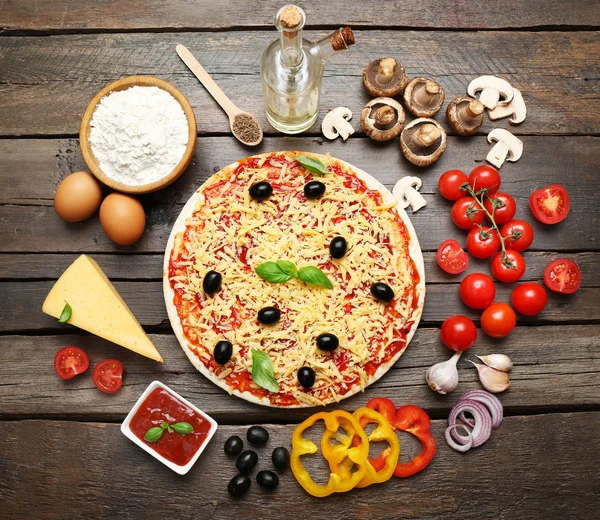
Image Credits: depositphotos.com
Pizza comprises several components, some of which are compounds, while others are mixtures.
1. Cheese
Cheese is a result of curdling and fermentation. The physical and chemical properties of cheese components are changed during the formation process. Yeast, a bacteria, is added to induce a chemical reaction. As a result, cheese fulfills all the conditions of a compound.
2. Crust
The crust is the second element of pizza, also regarded as a compound. During dough preparation, yeast is added, and then the dough undergoes a chemical reaction at a specific temperature. Ultimately, the dough ingredients lose their physical and chemical properties to create a new substance.
3. Pizza Sauce
Pizza sauce is considered a mixture. Sauce formation starts with various ingredients like garlic seasoning, tomatoes, and water mixed. These ingredients are then heated to form a substance with uniform composition. Therefore, the sauce may be considered a homogeneous mixture.
The pizza sauce ingredients are physically combined, and no chemical reactions are involved. This implies that the components of a sauce can be physically separated. This is why we see the label on the sauces always written ‘stir before use.’
Is Pizza a Mixture?
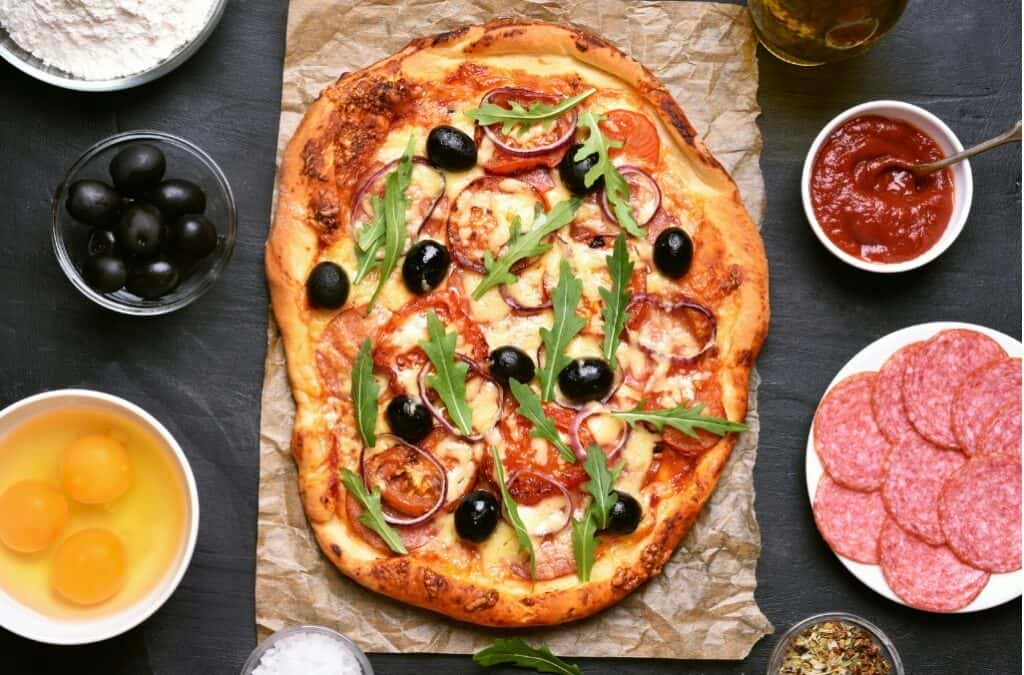
Image Credits: allpizzaholic.com
A mixture is made of physically combined components. Other characteristics of a mixture include:
- Components are not chemically combined.
- A mixture comprises more than one substance.
- The components of the mixture can be separated physically.
- The components retain their original identity after the combination.
From the definition, it is right to say pizza is a mixture. The pizza components (dough, sauce, cheese, toppings) are not chemically combined and can easily be separated. Moreover, we can taste each component of the pizza separately.
What Makes Pizza a Mixture?
Pizza is the crust, topped with layers of other substances, including sauce, cheese, and toppings. The pizza-making process qualifies it to be called a mixture. These components are combined and then baked. This might make you wonder why it’s not a chemical process since heat is involved.
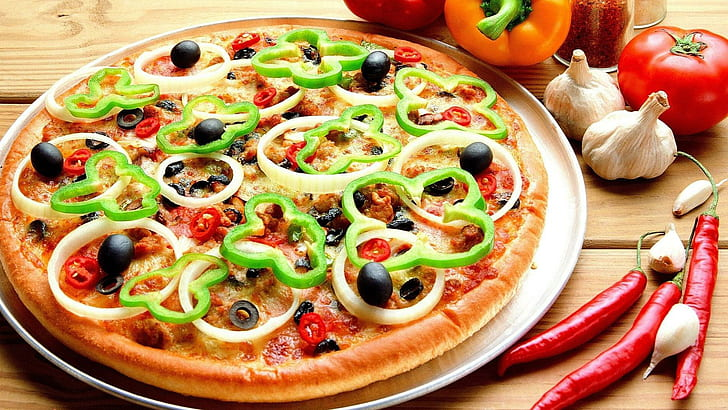
Image Credits: wallpaperflare.com
When you put a pizza in the oven, the heat does not transform all ingredients into a consistent substance in chemical composition all over. So you can pick a piece of pepperoni off your pizza and lick off the sauce.
The crust is categorized as a compound because baking the dough to make the crust is indeed a chemical process. All the elements making the dough undergo a chemical process to form a new homogeneous substance.
However, this is not the case when it comes to baking pizza. Most elements do not lose their chemical characteristics, and you can differentiate between the tastes of cheese, meat, and veggies.
Other elements of pizza also fall under the definition of a compound like cheese. Cheese undergoes the procedures of curdling, aging, and fermentation to form a uniform mix of the same molecules.
Furthermore, the cheese and sauce are not chemically bonded to the crust and retain their physical features.
Scientifically, there are two types of mixture. Let’s find out what mixture a pizza is.
Is Pizza Heterogeneous or Homogeneous?
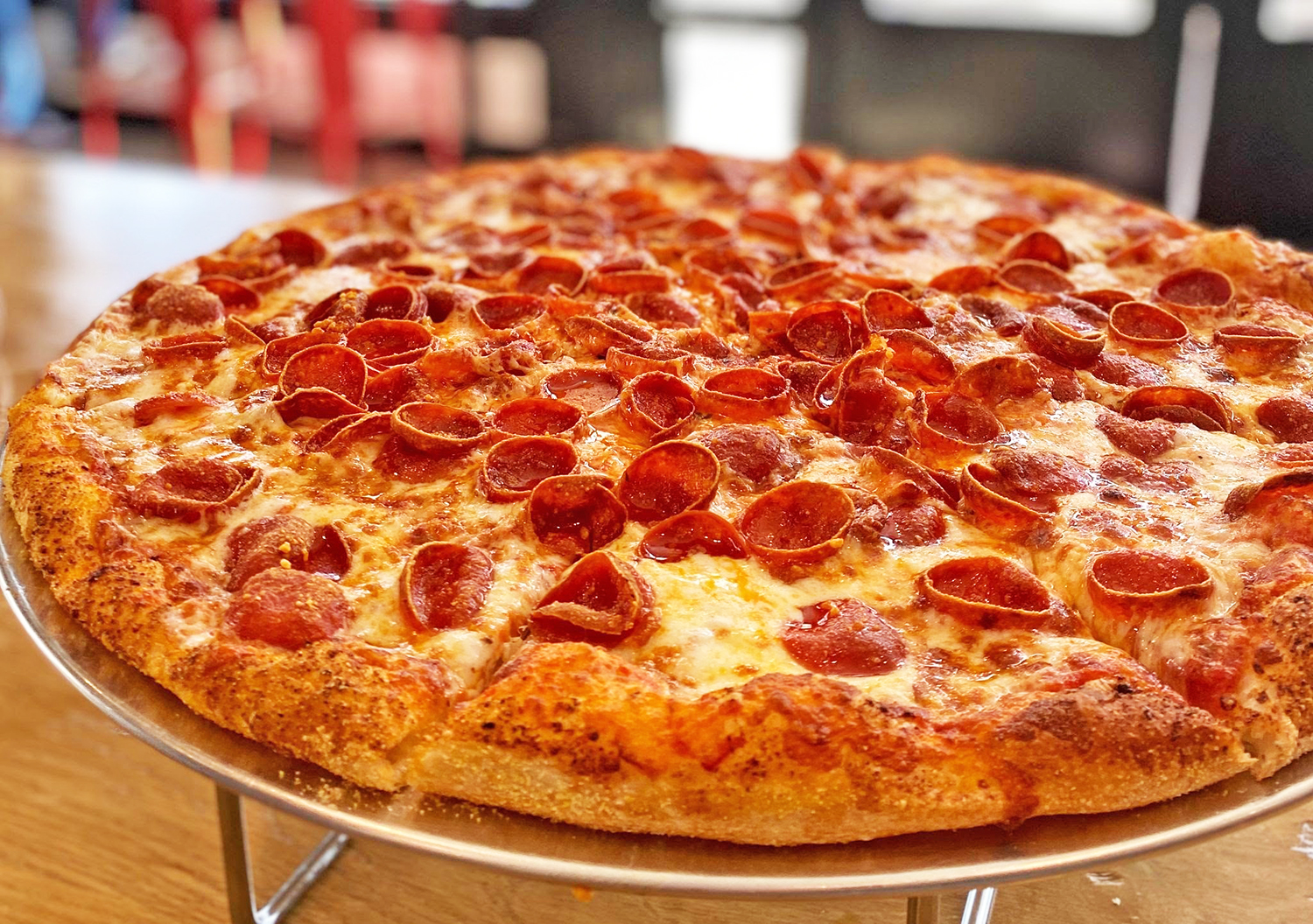
Image Credits: brooklyncraftpizza.com
You might have guessed what kind of mixture pizza is from the discussions above. For a better understanding, let’s go through the two mixtures and find out where to classify pizza.
Is Pizza a Heterogeneous Mixture?
A heterogeneous mixture is a substance that is not uniform in its presentation. In heterogeneous mixtures, one part will have a different composition than the other.
In the case of pizza, if cut into slices, no two slices are the same. This is because pizza comprises different ingredients, crust, sauce, cheese, and toppings, which are separate components. But you can’t have the same amount of ingredients in different slices.
This characteristic qualifies pizza to be a heterogeneous mixture. Unless you make your pizza consistent with a completely flat piece of crust, a level amount of sauce, measured cheese, and consistently chopped up and layered toppings. But this isn’t easy to do accurately.
Moreover, you cannot only identify the ingredients of a pizza but also touch and separate them easily.
Is Pizza a Homogeneous Mixture?
No, pizza is not a homogenous mixture.
Here are the characteristics of a homogeneous mixture:
- Elements are distributed uniformly.
- Uniform composition.
- You can’t judge the components by simply having a look at them.
From the composition of the pizza, the mixture is not uniform. No matter the effort, it isn’t easy to evenly spread pizza sauce, cheese, and other dressings on the molecular level. The same is the case with toppings. Some parts of the crust will have more toppings than others.
Most often, homogeneous mixtures are solutions, but have you ever heard someone calling pizza a solution? In addition, pizza remains in the original form of its constituent elements after baking—another reason to ascertain that pizza is not a homogeneous mixture.
From the look of a pizza, it is evident that the distribution of the components is not uniform. There are few chances that you and your partners will get the same chicken chunks in a pizza slice at a weekend party.
Pizza Making Phases
When making pizza, many elements are involved. The options are unlimited, and you can mix various ingredients to create your piece of pizza art. The many levels you add to a pizza create depth and flavor. This justifies the saying, ‘the more, the merrier.’
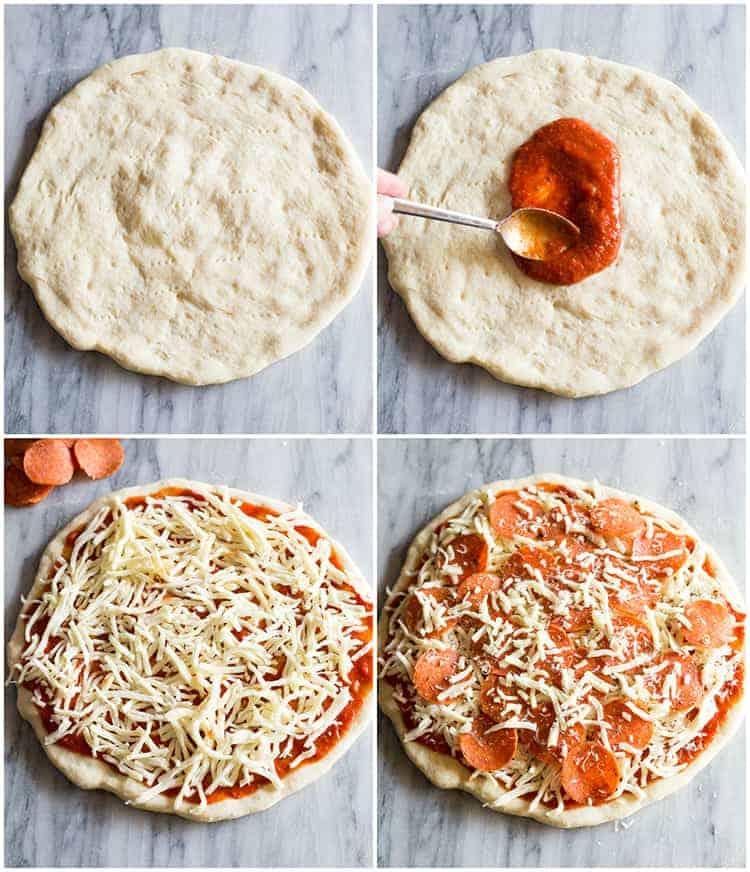
Image Credits: tastebetterfromscratch.com
One thing about pizza is that there’s something for everyone. From thick Chicago-style pizzas with loads of toppings to simple plain cheese pizzas liked by kids, there are no rules, just lots of different options. So let’s look at the phases of pizza making that classify pizza as a mixture.
i) The Diversity of Pizza Crusts
There are many pizza crusts to choose from, and any crust style can go with whatever toppings you choose. Some of the common pizza crusts include;
- Pan pizza which is fluffier and thicker in texture.
- Hand-tossed is a crisper and flatter crust.
- The thin crust is crispy and often lower in calories.
- The gluten-free crust is an option for those with celiac disease.
- Stuffed crust pizza, with cheese and other ingredients, is put into the outer edge of the crust.
- A cauliflower crust
- Cracker crust
ii) Choosing Sauces
While some people prefer fresh tomato sauce with garlic and basil, others prefer a white pizza with olive oil and cheese but no sauce. But what type of sauce do you prefer on your pizza? There’s plenty to choose from the red sauce, BBQ sauce, Bechamel sauce, and Ranch sauce.
Interestingly, some cheese, like Ricotta cheese, can be used in place of the traditional red sauce.
iii) Pizza Toppings Assortment
The final layer on the pizza is the toppings which add flavorful bursts to every bite. There are various options for meat and poultry lovers, including ham, chicken, sausages, pepperoni, ground beef, and prosciutto.
Regarding the vegan diet, the following ingredients top the most common list: onions, mushrooms, green peppers, fresh garlic, black olives, tomato, and fresh basil. Some people even add pineapple to the mix.
Conclusion
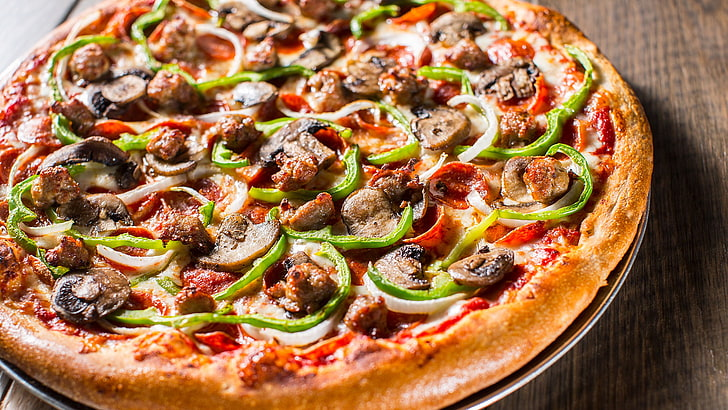
Image Credits: wallpaperflare.com
This detailed research shows that pizza is not an element because it comprises several components. Further, we discover that pizza is not a compound because all pizza ingredients, including pizza crust, sauce, cheese, and toppings, do not undergo a chemical reaction to form a new substance.
However, it is clear that pizza is a mixture, and we have proved this in multiple ways with the aid of science. In addition, we also came to know that pizza is a heterogeneous mixture because of its non-uniform composition.
Featured Image Credits: flowvella.com


